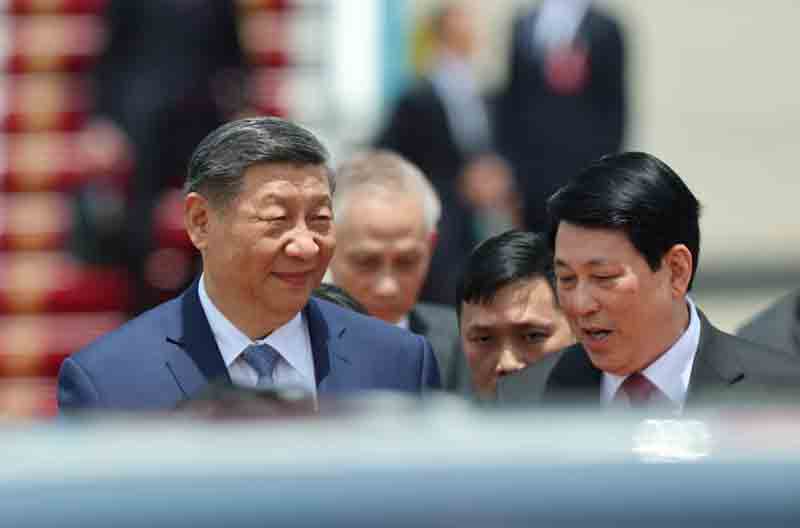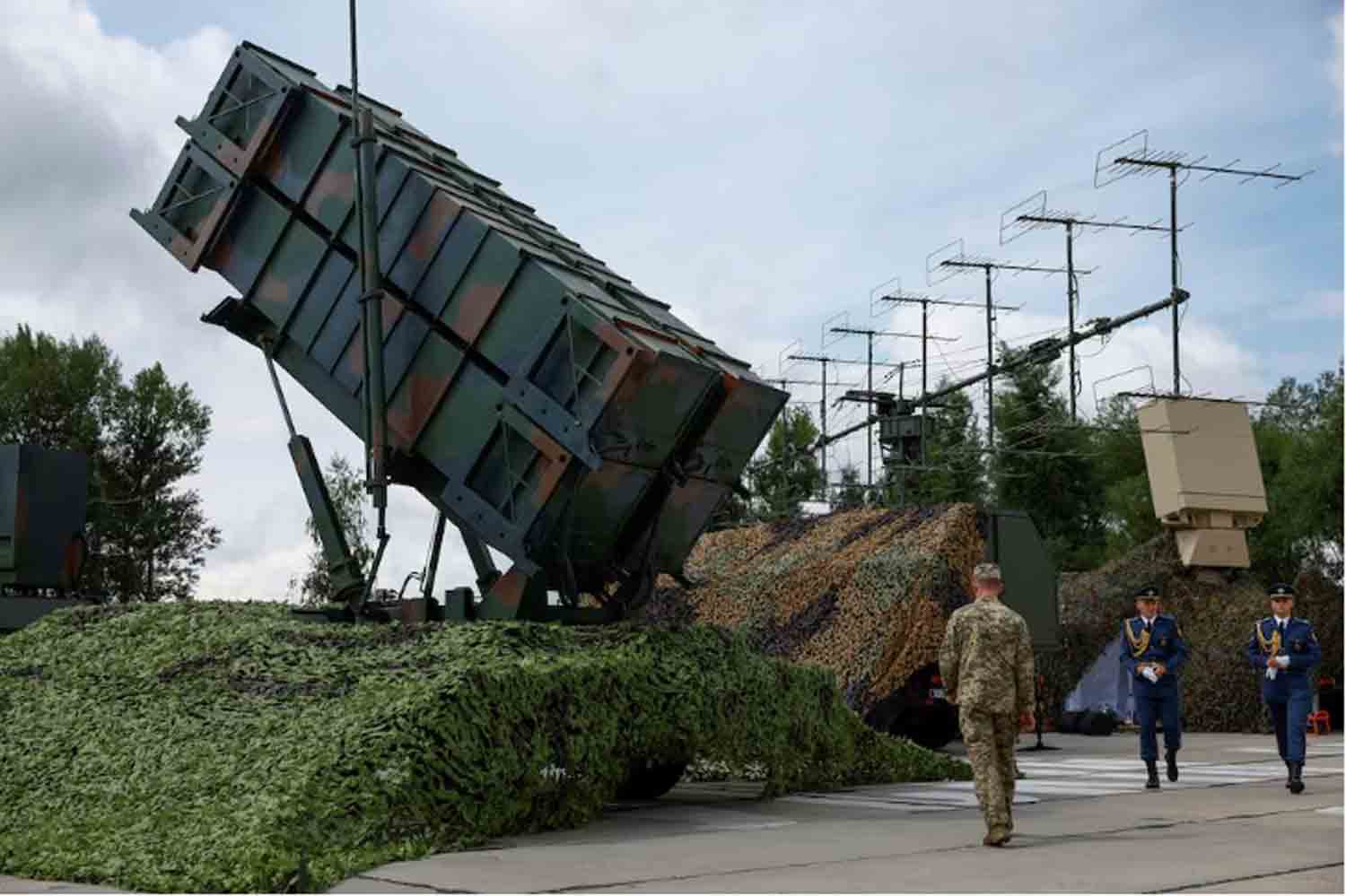On Monday, China‘s President Xi Jinping emphasized the need for enhanced trade and supply chain collaboration with Vietnam during his visit to Hanoi, where he witnessed the signing of numerous cooperation agreements between the two Communist nations. This visit, which had been in the works for several weeks as part of a broader Southeast Asia tour, occurs against the backdrop of significant U.S. tariffs, with China facing a 145% duty and Vietnam negotiating to reduce a potential 46% tariff set to take effect in July after a global moratorium ends.
In an article published in Nhandan, the official newspaper of Vietnam’s Communist Party, Xi stated, “The two sides should strengthen cooperation in production and supply chains.” He also called for increased trade and collaboration with Vietnam in areas such as artificial intelligence and the green economy. “There are no winners in trade wars and tariff wars,” he remarked, without directly referencing the United States.
Following a meeting with Vietnam’s top leader, To Lam, the two nations signed a series of cooperation agreements, as shown in footage reviewed by Reuters. These agreements included initiatives to enhance supply chains and collaborate on railway projects. However, the specifics of these agreements were not disclosed, and it remains uncertain whether they entail any financial or binding obligations.
On Saturday, Vietnam’s Deputy Prime Minister Bui Thanh Son indicated that approximately 40 agreements were expected to be signed. In response to pressure from Washington, Vietnam is tightening regulations on certain trade with China to ensure that goods exported to the United States under a “Made in Vietnam” label possess adequate added value within the country. One of the memorandums of understanding signed on Monday aims to strengthen cooperation between the China Council for the Promotion of International Trade and the Vietnam Chamber of Commerce and Industry, which is responsible for issuing certificates of origin for goods.
Vietnam serves as a significant industrial and assembly center in Southeast Asia. The majority of its imports come from China, while the United States stands as its primary export destination. The nation plays a vital role in supplying electronics, footwear, and clothing to the U.S. market.
In the first quarter of this year, Hanoi imported approximately $30 billion worth of goods from Beijing, while its exports to Washington reached $31.4 billion, according to Vietnam’s customs data. This reflects a consistent trend where imports from China closely align with the value and fluctuations of exports to the U.S.
RAIL CONNECTIONS, AIRCRAFT
Following a two-day visit to Hanoi, Xi will proceed with his Southeast Asian tour on Tuesday, making stops in Malaysia and Cambodia from April 15 to 18. His last visits to these countries occurred nine and twelve years ago, respectively.
Xi’s trip to Hanoi, his second in under 18 months, aims to strengthen ties with a strategic neighbor that has attracted billions in Chinese investments as manufacturers relocate south to evade tariffs imposed during the Trump administration.
In an article published on Monday in state media, Vietnam’s Lam expressed the desire to enhance collaboration in defense, security, and infrastructure, particularly regarding rail connections. Vietnam has agreed to utilize Chinese loans for the construction of new railways between the two nations, marking a significant step towards building trust and enhancing bilateral trade and connectivity. However, no formal loan agreement has been disclosed yet.
Additionally, Beijing is seeking Vietnam’s endorsement for its COMAC aircraft, which have faced challenges in attracting foreign buyers.
On Sunday, VietJet, Vietnam’s low-cost airline, and COMAC entered into a memorandum of understanding in Hanoi, as reported by an invitation to the event obtained by Reuters. A COMAC C909 regional aircraft, adorned with VietJet’s branding and the insignia of Chengdu Airlines, was observed at Hanoi International Airport on Monday.
Details of the agreement have yet to be disclosed; however, Reuters previously indicated that a draft proposal involves VietJet leasing two COMAC C909 aircraft, which would be operated by crews from Chengdu Airlines, for two domestic routes.
Despite robust economic relations, tensions often arise between the two nations due to disputed territories in the South China Sea. Additionally, Vietnam’s concessions to the U.S. to mitigate tariffs may provoke Beijing, particularly as these concessions include the introduction of Elon Musk’s Starlink satellite communication service in Vietnam, alongside restrictions on certain trade with China due to potential violations of origin rules.
In recent months, Vietnam has also implemented anti-dumping duties on various Chinese steel products and revoked a tax exemption for low-value parcels, a move officials claim is aimed at curbing the influx of inexpensive Chinese goods. Meanwhile, Cambodia and Malaysia, which are also on Xi’s Southeast Asia agenda, are contending with U.S. tariffs of 49% and 24%, respectively, and have begun reaching out to the U.S. for relief.
Discover more from Defence Talks | Defense News Hub, Military Updates, Security Insights
Subscribe to get the latest posts sent to your email.





